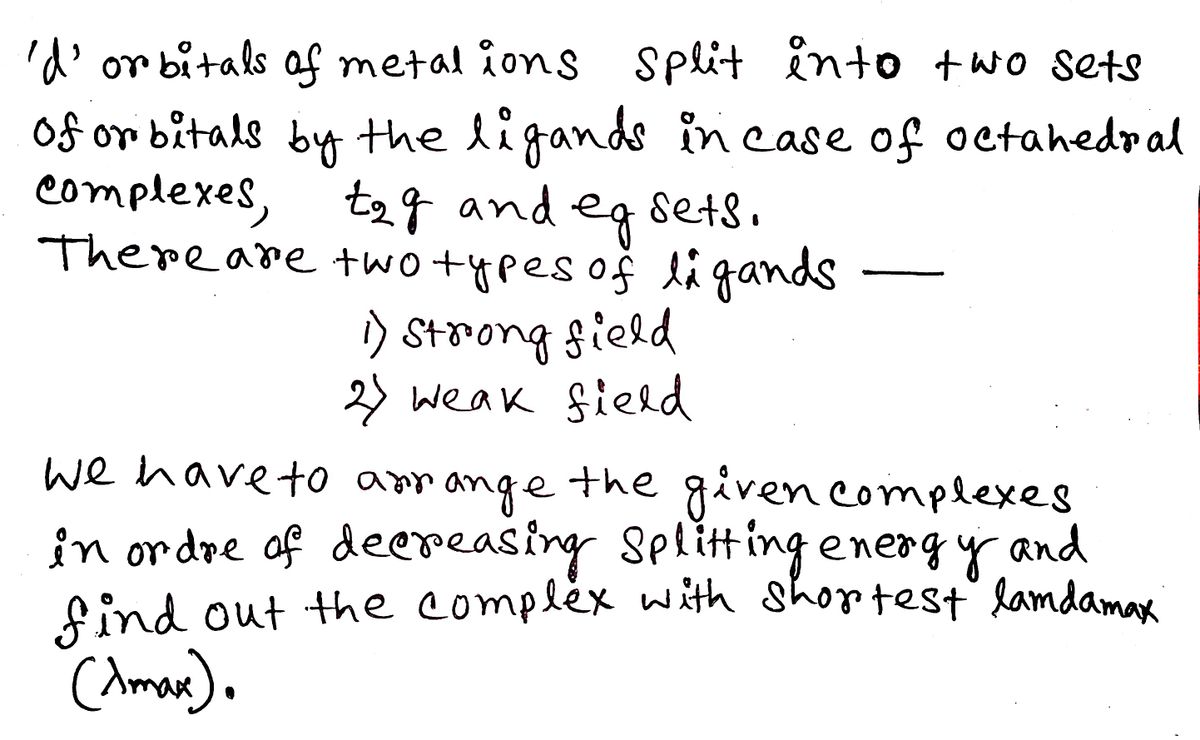Consider the splitting energies for the octahedral complex ions, FeBr3(CN)34-, FeBr5(CN)4-, FeBr2(CN)44-, and FeBr4(CN)24-. a) List the complex ions in order of decreasing splitting energies. (Largest splitting energy to the lowest splitting energies. Explain your answer. b) Which of these complex ions will have the shortest lamdamax? Explain your choice.
Atomic Structure
The basic structure of an atom is defined as the component-level of atomic structure of an atom. Precisely speaking an atom consists of three major subatomic particles which are protons, neutrons, and electrons. Many theories have been stated for explaining the structure of an atom.
Shape of the D Orbital
Shapes of orbitals are an approximate representation of boundaries in space for finding electrons occupied in that respective orbital. D orbitals are known to have a clover leaf shape or dumbbell inside where electrons can be found.
Consider the splitting energies for the octahedral complex ions, FeBr3(CN)34-, FeBr5(CN)4-, FeBr2(CN)44-, and FeBr4(CN)24-.
a) List the complex ions in order of decreasing splitting energies. (Largest splitting energy to
the lowest splitting energies. Explain your answer.
b) Which of these complex ions will have the shortest lamdamax?
Explain your choice.

Step by step
Solved in 5 steps with 5 images









